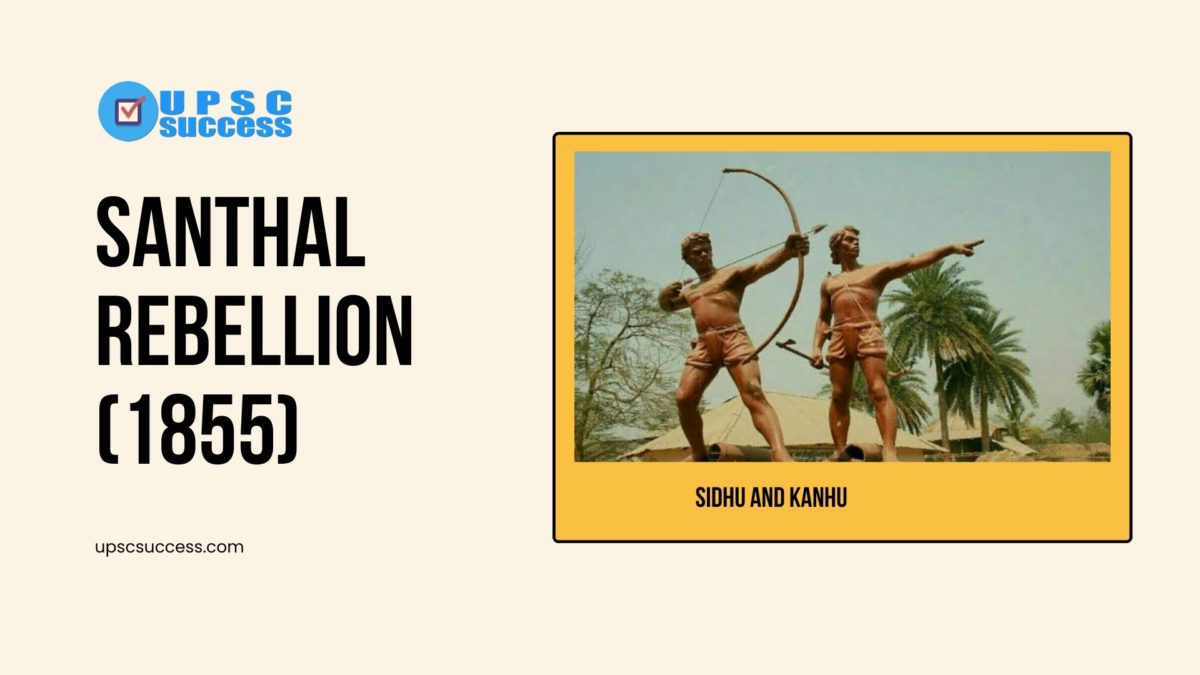It was a revolt against the oppression of colonial rule to end the despotic British revenue system and the zamindari system in India.
The rebellion was led by the four Murmu Brothers – Sidhu, Kanhu, Chand and Bhairav.
The Santhals took to arms. In many villages, the Zamindars, money lenders and their operatives were put to death.
The revolt was brutally crushed, the two celebrated leaders Sidhu and Kanhu were killed.
The legend of the Santhal Rebellion lives on as a turning point in Santhal pride and identity.
It is estimated that between 15,000 to 20,000 Santhals were killed by the British. The brothers Sidhu and Kanhu, were among the casualties. Even though the rebellion was suppressed within a year in 1856 by the Company, few pockets of Santhal resistance continued till 1857.
FAQs
On 30th June 1855, two years before the Great Revolt of 1857, two Santhal brothers Sidhu and Kanhu Murmu organised 10,000 Santhals and proclaimed a rebellion against the British.
The rebellion of the Santhals began as a reaction to end the revenue system of the British East India Company (BEIC), usury practices, and the zamindari system in India; in the tribal belt of what was then known as the Bengal Presidency.
On 30 June 1855, two Santal rebel leaders, Sidhu Murmu and Kanhu Murmu (related as brother) along with Chand and Bairab, mobilized about 10,000 Santals and declared a rebellion against British colonists.
The landlords were in the support of the government whereas the local people supported the Santhals in full vigor. Unfortunately, the duo brother Sidhu and Kanhu were arrested and the revolt had a brutal end. The Santhals were repressed and the movement came to an end in 1856.
The symbol of the Santhal rebellion was a Sal tree. It was taken as the ideogram of Unity and Strength.
Major Burrough was defeated by the Santhals in 1855.

